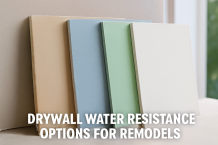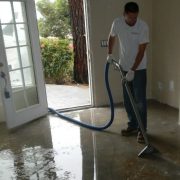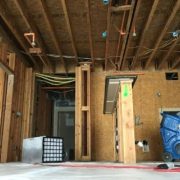Building Water Damage San Diego CA
Water damage is a lurking menace that can compromise the structural integrity of your business premises, disrupt operations, and lead to significant financial losses.
Whether it’s a sudden flood due to extreme weather, a burst pipe, or a slow, unnoticed leak, water damage can be devastating. Fortunately, by implementing a proactive approach, business owners can safeguard their establishments from such calamities.

Here’s a comprehensive guide on how to protect your business from building water damage.
1. Regular Maintenance Checks: One of the best defenses against water damage is regular maintenance. Schedule frequent checks of your roofing, gutters, and downspouts. Ensure that the roof is devoid of cracks and that gutters are clear of debris to prevent water accumulation. Also, inspect plumbing systems, seals, and fixtures for any signs of wear and tear or leaks.
2. Install Water Detection Systems: Investing in a water detection system can be invaluable. These systems are designed to sense water levels and alert you if they rise above a certain point, allowing for swift intervention. They can be especially useful in areas prone to flooding or spaces with a lot of plumbing, like bathrooms and kitchens.
3. Seal Your Building: Make sure that your business premises are adequately sealed. This includes the foundation, windows, and doors. Over time, seals can wear down, providing easy access for water. Regularly inspect and replace worn-out seals and consider applying waterproof paint or sealant, especially if your business is in a flood-prone area.
4. Landscape Wisely: Landscaping isn’t just about aesthetics. Proper landscaping can act as a barrier against water damage. Grade your property so that water flows away from the building. Use plants and shrubs that absorb excess moisture and install rain gardens or swales to redirect and utilize rainwater.
5. Keep Drains and Sumps Clear: Blocked drains and sumps can lead to water backing up, creating an ideal environment for water damage. Regularly inspect and clean these systems, ensuring that they’re functioning optimally. Installing backwater valves can also prevent city sewers from backing up into your property during heavy rainfall.
6. Educate and Train Your Staff: Your staff can be your first line of defense against potential water damage. Conduct regular training sessions to educate them about the signs of potential water damage, the locations of water shut-off valves, and the steps to take if they detect an issue. Empowered and informed employees can act swiftly, mitigating potential damage.
7. Have a Response Plan: Despite your best preventive measures, sometimes the unexpected can occur. Having a well-detailed response plan can help mitigate damage when time is of the essence. This plan should outline steps on how to address various types of water damage scenarios, contact details for emergency services, and a communication plan for staff and stakeholders.
8. Insure Your Business: Last but not least, ensure that your business insurance covers water damage. Regularly review and update your policy, taking into account the value of your assets and any changes in your business operations. Remember, not all insurance plans automatically cover flood damage, so it’s essential to discuss specifics with your insurance provider.
Follow Us on Facebook
Sources of Water Damage for Commercial Buildings
Water damage in commercial buildings can arise from a multitude of sources. Recognizing these can enable business owners and facility managers to take preemptive measures and address potential issues before they escalate. Here are the main sources of water damage in commercial establishments:
1. Roof Leaks and Failures: Roofing systems, over time, can deteriorate due to weather, wear and tear, or poor maintenance. Damaged shingles, corroded flashing, or compromised seals can allow water to seep into the building, leading to damage.
2. Plumbing System Issues: This encompasses a variety of problems like burst pipes, malfunctioning sprinkler systems, leaky faucets or fixtures, and damaged supply lines. Often, these issues are due to age, freezing conditions, or undue pressure within the plumbing system.
3. HVAC Problems: Heating, ventilation, and air conditioning systems can contribute to moisture buildup, especially if not maintained. For instance, condensation from air conditioning units can accumulate and lead to water damage.
4. Natural Disasters: Events such as heavy rainfall, flash floods, or hurricanes can overwhelm drainage systems and introduce vast amounts of water in a short period, posing significant risks to commercial structures.
5. Foundation and Basement Issues: Cracks in the foundation or walls of a building can permit water ingress, especially if the establishment is in a low-lying area. Furthermore, improper drainage systems can lead to water pooling around the foundation.
6. Landscape and Drainage Flaws: Improper grading or a lack of adequate drainage on the property can result in water accumulating near the building structure. This can subsequently lead to seepage into basements or ground floors.
7. Sewer and Septic Tank Backups: Blockages or issues in the municipal sewer system or a building’s septic system can cause wastewater to flow backward, leading to potential contamination and damage.
8. Appliance Malfunctions: Commercial buildings often house various appliances, from water heaters to refrigeration units. Any malfunction or failure in these appliances, such as a leak or overflow, can result in localized water damage.
9. Sprinkler System Activation: While essential for fire safety, sprinkler systems can sometimes malfunction or be set off accidentally. When this occurs, it can inundate an area with water quickly, causing damage to interiors and assets.
10. Vandalism: Though less common, intentional acts of sabotage or vandalism, such as leaving taps open, can also be a source of water damage in commercial settings.
Being aware of these potential sources and regularly inspecting vulnerable areas can significantly reduce the risk of water damage. Proactive measures, combined with a responsive plan for any breaches, ensure that commercial buildings remain resilient against the threat of water-related harm.
Frequently Asked Questions About Water Damage and Commercial Buildings?
1. What are the first steps I should take after discovering water damage in my building?
Answer: Firstly, prioritize safety. If there’s significant flooding, turn off electricity at the main breaker, but only if it’s safe to do so. Next, stop the source of water if possible, such as shutting off the main water valve. Document the damage by taking photos and videos for insurance purposes. Then, contact a professional water damage restoration company to assess the damage and start the cleanup process. It’s also wise to notify your insurance company about the incident promptly.
2. How long does it take for mold to develop after water damage?
Answer: Mold can start growing within 24 to 48 hours after water exposure, depending on the conditions. Warm, dark, and humid environments are ideal for mold growth. Therefore, it’s crucial to start the drying process as soon as possible after water damage to prevent mold proliferation.
3. Will my insurance cover the costs of water damage repair and restoration?
Answer: Coverage varies depending on your insurance policy and the cause of the damage. Typically, sudden and accidental incidents like bursting pipes or appliance malfunctions are covered. However, damage resulting from lack of maintenance or gradual leaks might not be. Natural disasters like floods usually require a separate policy. Always review your insurance policy details and consult with your insurance agent to understand your coverage better.
Protecting your business from water damage is a combination of proactive measures and prompt responses. By implementing these strategies, you not only safeguard the physical infrastructure of your business but also ensure the continuity of your operations, the safety of your staff, and the trust of your stakeholders. In the world of business, as with many things, prevention is always better than cure.















Follow Us!